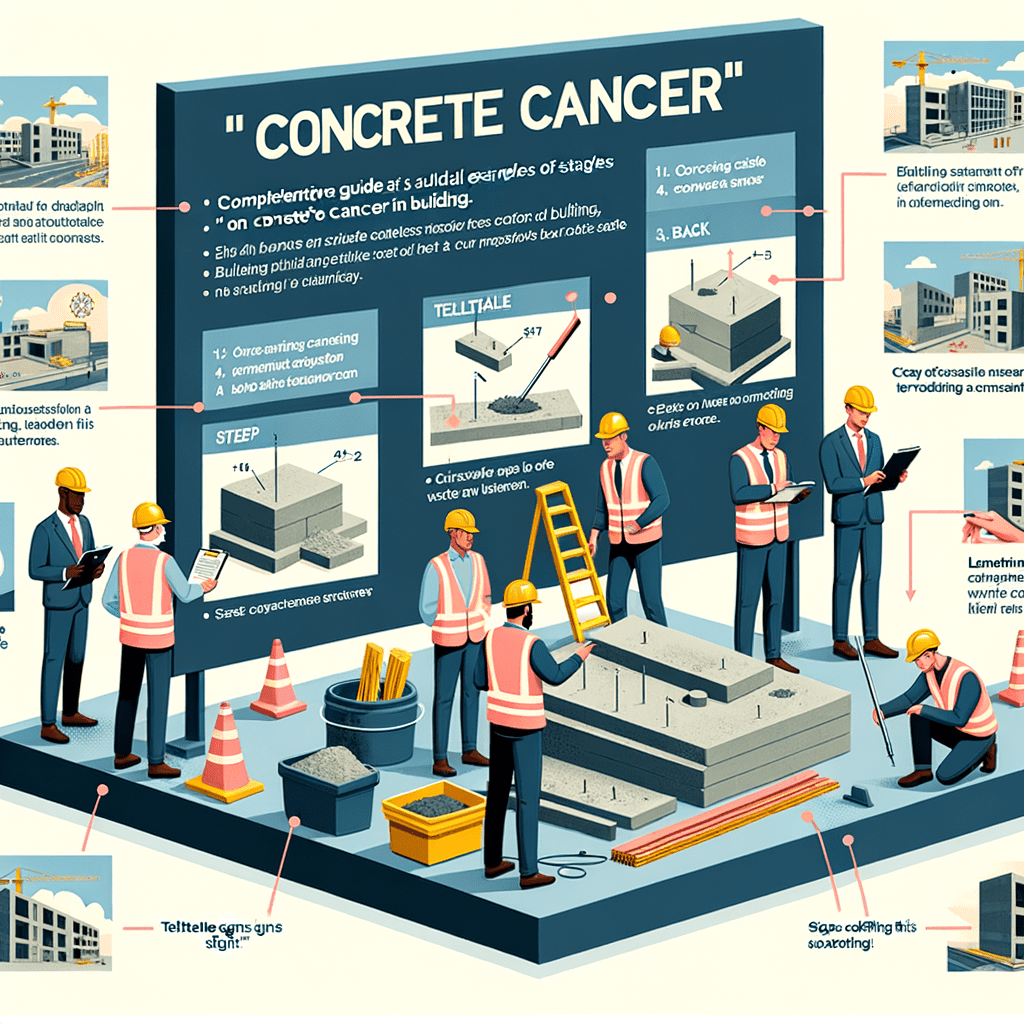Understanding Concrete Cancer in Construction: Identification and Remediation
What is Concrete Cancer?
Concrete cancer, also known as concrete spalling or concrete degradation, is a serious issue that affects the structural integrity of buildings. It occurs when the steel reinforcement within concrete structures begins to corrode. This corrosion causes the steel to expand, which in turn leads to the cracking and flaking of the surrounding concrete. Over time, this can significantly weaken the structure, posing safety risks and potentially leading to costly repairs.
Causes of Concrete Cancer
Corrosion of Reinforcement Steel
The primary cause of concrete cancer is the corrosion of the steel reinforcement bars (rebar) embedded within the concrete. This corrosion can be triggered by several factors:
- Exposure to Moisture: Water ingress is a major contributor to steel corrosion. When water penetrates the concrete, it can reach the rebar and initiate the rusting process.
- Chloride Ions: Chlorides, often found in de-icing salts and seawater, can accelerate the corrosion of steel. These ions can penetrate the concrete and reach the rebar, leading to rapid deterioration.
- Carbonation: Over time, carbon dioxide from the atmosphere can react with the calcium hydroxide in concrete, forming calcium carbonate. This process, known as carbonation, lowers the pH of the concrete, making it more acidic and less protective of the steel reinforcement.
Poor Construction Practices
Inadequate construction practices can also contribute to concrete cancer. These include:
- Insufficient Concrete Cover: The concrete cover is the layer of concrete that protects the rebar. If this layer is too thin, it can be more easily penetrated by water and chlorides.
- Low-Quality Concrete: Using substandard concrete mixes can result in a porous and weak structure that is more susceptible to water ingress and carbonation.
- Improper Curing: If concrete is not properly cured, it can develop cracks and weaknesses that allow moisture to penetrate.
Identifying Concrete Cancer
Early identification of concrete cancer is crucial for preventing further damage and ensuring the safety of the structure. Here are some key signs to look out for:
Visible Cracks and Flaking
One of the most obvious signs of concrete cancer is the appearance of cracks and flaking on the surface of the concrete. These cracks may start small but can quickly expand as the steel reinforcement continues to corrode and exert pressure on the surrounding concrete.
Rust Stains
Rust stains on the surface of the concrete are another telltale sign of concrete cancer. These stains are caused by the rusting rebar within the concrete, which can leach out and discolour the surface.
Spalling
Spalling refers to the flaking or chipping away of the concrete surface. This occurs when the expanding rust pushes against the concrete, causing it to break away in chunks. Spalling can be particularly dangerous as it exposes the rebar to further moisture and accelerates the corrosion process.
Hollow Sound
Tapping the concrete surface with a hammer or similar tool can help identify areas affected by concrete cancer. A hollow or drummy sound indicates that the concrete has delaminated from the rebar and is no longer providing adequate support.
Exposed Rebar
In severe cases of concrete cancer, the rebar may become exposed as the surrounding concrete deteriorates. This is a clear indication that the structural integrity of the building is compromised and immediate action is required.
Steps to Remedy Concrete Cancer
Addressing concrete cancer involves a combination of preventative measures and remedial actions. Here’s a step-by-step guide to tackling this issue:
Step 1: Conduct a Thorough Inspection
The first step in addressing concrete cancer is to conduct a comprehensive inspection of the affected structure. This should be carried out by a qualified structural engineer or building surveyor who can accurately assess the extent of the damage and identify the underlying causes.
Step 2: Remove Damaged Concrete
Once the affected areas have been identified, the next step is to remove the damaged concrete. This can be done using a variety of methods, including:
- Chipping: Manually chipping away the damaged concrete with a hammer and chisel.
- Hydrodemolition: Using high-pressure water jets to remove the damaged concrete without causing further harm to the surrounding structure.
- Mechanical Removal: Employing power tools such as jackhammers or concrete saws to cut away the damaged sections.
Step 3: Clean and Treat the Rebar
After the damaged concrete has been removed, the exposed rebar must be thoroughly cleaned to remove any rust and corrosion. This can be done using wire brushes, sandblasting, or chemical rust removers. Once cleaned, the rebar should be treated with a corrosion inhibitor to prevent future rusting.

